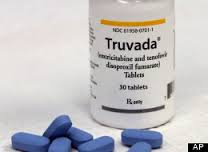Benefits outweigh risks, say researchers
Michael Carter
Published: 14 May 2015
Treatment with tenofovir/emtricitabine (Truvada) as pre-exposure prophylaxis (PrEP) is associated with small but significant decreases in bone mineral density (BMD), investigators from the landmark iPrEx study report in the online edition of Clinical Infectious Diseases.
Changes in bone mineral density were compared between people randomised to receive Truvada and individuals in the control arm. Treatment with Truvada was associated with decreases in bone mineral density in both the spine and hip. However, these decreases occurred only during the first 24 weeks of treatment and bone mineral density in the spine recovered after therapy was discontinued. Moreover, the small reductions observed in the people taking Truvada did not appear to increase the risk of fractures.
“These results demonstrate the effect of FTC/TDF [emtricitabine/tenofovir] that is independent of HIV infection or other ART [antiretroviral therapy],” comment the authors. “The relatively small bone loss associated with FTC/TDF PrEP is offset by the prevention of HIV infection, which requires combination ART that is associated with relatively greater loss of BMD.”
There is now robust evidence that daily Truvada PrEP significantly reduces the risk of HIV infection. But there are ongoing concerns about the safety of this therapy. In some people living with HIV, therapy with tenofovir has been associated with impaired kidney function and/or reductions in bone mineral density.
HIV infection can also have a negative impact on bone health and there is a high prevalence of other risk factors for low bone mineral density among people with HIV. The true impact of tenofovir-containing PrEP on bone mineral density in HIV-negative people is therefore open to question.
Read the full article here: AIDSMAP
